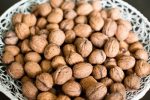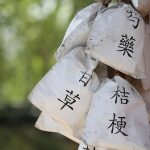
- Marketed for supporting cognitive functions
- Improving memory and increasing focus
Huperzine A is highly active nootropic alkaloid and ingredient which is extracted from various clubmoss or lycopodium species of the Huperziceae family. It is incorporated into sports supplements because of the clinical evidence associated with improving memory and boosting cognitive functions. It is a more potent ingredient than caffeine.
Originally, huperzine A was found in a traditional Chinese medicine called Qiang Ceng Ta. The whole plant of Huperzia serrata (Thunb. ex Murray) Trev was the top choice.
Unlike caffeine, it is known to inhibit the degradation of acetylcholine which is the key neurotransmitter in the nervous system. Biochemically, this probably means that signal transduction throughout the central nervous system (CNS) is increased. The nature of the cholinergic response is improved to a point where memory is better retained and the learning processes are improved. Fortunately, unlike a number of toxins the alkaloid’s action is reversible. In pharmacological terms, the alkaloid is eliminated at a reasonable rate from the body. Compared to modern pharmaceuticals, it also has better penetration across the blood-brain barrier, better bioavailability and prolonged activity in terms of AChE inhibition (Bai et al., 2000).
The properties of huperzine are such that it is widely regarded for improving cognition and in protecting or maintaining a healthy brain. There is considerable research being conducted to understand if it can help students with exam taking, general learning and other learning functions.
It is often used as part of a nootropic stack and it is widely reported that it does not interfere with other nootropic substances or be affected in turn by them. It’s worth noting however that there is only anecdotal evidence available to support these notions however clinical evidence is being developed.
The phytochemical is extracted from one Chinese clubmoss in particular – Huperzia serrata although other members of the genus work well.
In the USA, the recommended dosage of Huperzine A as a 1 per cent extract is between 10 and 20mg daily. It implies that the maximum level of Huperzine A to be taken is 200 micrograms per day.
Side Effects From Excessive Dosing With Huperzine
Caution does need to be exercised in taking this supplement. It is recommended that the dosing levels in sports supplements be studied carefully to avoid complications such as the following:-
- nausea
- sweating
- speech slurring
- blurred vision
- abnormal muscle twitching
- inability to rest or stay calm
- stiffness in the neck
Clinical Evidence For The Benefits Of Huperzine
Clinically, a number of Chinese institutes are examining the role of Huperzine A in the amelioration of Alzheimer’s Disease (Bai et al., 2000). Alzheimer’s Disease (AD) is a neurologically degenerative condition that affects over 20 million people globally including nearly 5 million US citizens. That number is expected to double nearly every 20 years and could be one of the leading causes of death in most developed countries. It is currently third behind cancer and cardiovascular disease. The disease progresses for over a decade before anything is noticed but once it has begun the obvious symptoms are devastating.
Indeed a number of hybrid molecules based on Huperzine are being developed to exploit the basic anticholinergic properties. The alkaloid is approved for treatment of Alzheimer’s in China since 1994. It helps improve memory deficit in the elderly those pateints with what is termed benign senescent forgetfulness, attention deficits and vascular dementia. A meta-analysis by Wang et al. (2009) of recent trials indicates if HupA is administered for at least 8 weeks, there is a significant improvement in general cognitive function of patients with attention deficit disorder. Longer term phase 2 trials in the US are not showing significant benefits and so the evidence is not clear. in due course, this article will be expanded to include the most relevant and up to date clinical data for a number of disease states.
References
Bai, D. L., Tang, X. C., & He, X. C. (2000). Huperzine A, a potential therapeutic agent for treatment of Alzheimer’s disease. Current Medicinal Chemistry, 7(3), pp. 355-374
Ma, X., Tan, C., Zhu, D., Gang, D. R., & Xiao, P. (2007). Huperzine A from Huperzia species—an ethnopharmacolgical review. Journal of Ethnopharmacology, 113(1), pp. 15-34 (Article)
Wang, B. S., Wang, H., Wei, Z. H., Song, Y. Y., Zhang, L., & Chen, H. Z. (2009). Efficacy and safety of natural acetylcholinesterase inhibitor huperzine A in the treatment of Alzheimer’s disease: an updated meta-analysis. Journal of Neural Transmission, 116(4), pp. 457-465.



Leave a Reply